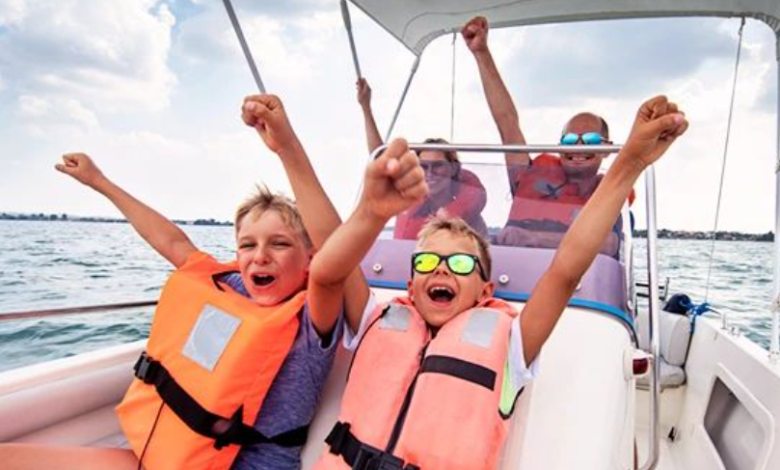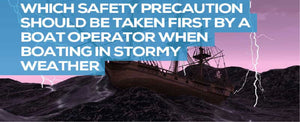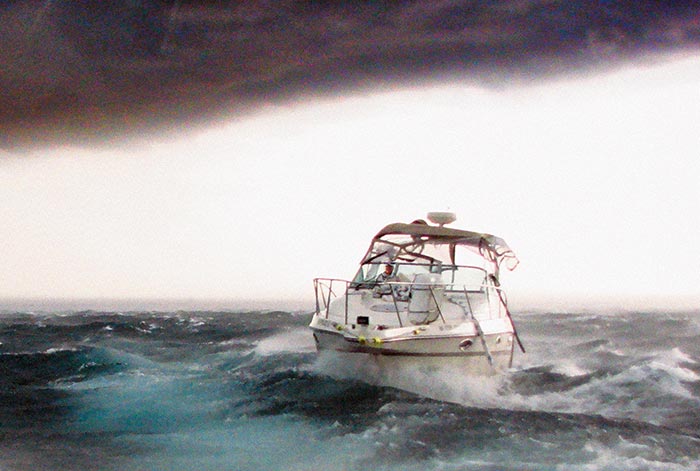Which Safety Precaution Should Be Taken First by a Boat Operator When Boating in Stormy Weather? Stay Safe with These Top Tips!

The first safety precaution for a boat operator in stormy weather is to ensure all passengers are wearing life jackets. In stormy conditions, wearing a life jacket is crucial for safety on the water.
When navigating a boat in stormy weather, preparation and caution are essential to ensure the safety of everyone on board. Safety should always be the top priority for boat operators, and taking proactive steps such as ensuring life jackets are worn can make a significant difference in emergency situations.
By following safety guidelines and being prepared, boat operators can navigate stormy weather with confidence, ensuring a safe and enjoyable boating experience for all.
Contents
1. Preparation Is Key
When boating in stormy weather, taking the right safety precautions is crucial. By preparing in advance, boat operators can mitigate risks and ensure the safety of themselves and their passengers.
1.1 Checking Weather Forecasts
Before heading out, boat operators should thoroughly check the latest weather forecasts for the specific area they intend to navigate. Understanding the predicted wind speeds, wave heights, and potential storm patterns allows for informed decision-making.
1.2 Inspecting The Boat
Prior to departing, a thorough inspection of the boat should be conducted. This should include checking the integrity of all essential components such as the engine, navigation equipment, fuel levels, and safety gear. Identifying any issues beforehand can prevent potential breakdowns or failures while at sea.
1.3 Securing Loose Items
Securing loose items on the boat is vital to prevent them from becoming dangerous projectiles during stormy conditions. All loose equipment, such as fishing gear, chairs, and coolers, should be stowed away securely to avoid causing harm to passengers or damage to the vessel.

Credit: pontoon-depot.com
2. Safety Equipment
When boating in stormy weather, it is crucial for boat operators to prioritize safety equipment. This ensures proper preparedness and the ability to handle emergencies effectively.
2.1 Life Jackets
Life jackets are essential safety gear that all boaters should wear at all times, especially in stormy conditions. These devices help to keep individuals afloat and provide buoyancy in case of an accident or rough seas.
2.2 Flares And Distress Signals
Flares and distress signals are vital tools for signaling for help when in distress. Boaters should have these items readily accessible in case of an emergency, as they can aid in attracting attention and signaling for rescue.
2.3 First Aid Kit
A first aid kit is a fundamental piece of safety equipment on board a boat. It should contain essential supplies such as bandages, antiseptic wipes, and medications to address minor injuries or medical emergencies that may arise during stormy weather.
3. Boat Handling Techniques
When boating in stormy weather, the first safety precaution that should be taken by a boat operator is to ensure that everyone on board is wearing a life jacket.
3.1 Reduce Speed
Slow down to prevent losing control or capsizing.
3.2 Maintain A Proper Distance
Keep a safe distance from other boats to avoid collisions.
3.3 Keep The Bow Into The Waves
Orient the boat with the bow facing the waves for stability.
When boating in stormy weather, effective communication and navigation are crucial for the safety of both the boat operator and passengers. Prioritizing these aspects can help in ensuring a smooth and secure boating experience in adverse weather conditions.
4.1 Establishing Communication
Establishing reliable communication channels is the first step in ensuring safety during stormy weather. Boat operators should ensure that they have access to a reliable marine radio or satellite phone to communicate with the coast guard and other vessels in case of emergencies. Besides, maintaining a constant line of communication with the passengers on board can help in relaying important safety instructions and ensuring that everyone is informed and prepared for the weather conditions.
4.2 Using A Gps Or Chartplotter
Utilizing GPS or chartplotter systems is essential in navigating through stormy weather. Boat operators should make use of these advanced navigation tools to accurately track their position, monitor weather patterns, and plan alternative routes if necessary. By relying on these technologies, they can effectively navigate through adverse conditions and avoid potential hazards that may not be visible due to poor weather visibility.
Identifying and avoiding navigation hazards is crucial in stormy weather. Boat operators need to remain vigilant and adept at recognizing potential dangers such as submerged obstacles, shallow waters, and other vessels. Keeping a keen eye on navigational markers, buoys, and shorelines can aid in determining safe passages and avoiding hazardous areas, ensuring a secure journey despite the challenging weather conditions.
5. Emergency Preparedness
When boating in stormy weather, it is crucial for boat operators to prioritize their safety and the safety of their passengers. This requires being prepared for emergencies and having a plan in place. Emergency preparedness includes knowing what to do in unpredictable situations, having the necessary safety equipment, and knowing how to request assistance when needed. In this section, we will discuss the key aspects of emergency preparedness that boat operators should prioritize to ensure the well-being of everyone on board.
5.1 Having An Emergency Plan
A well-thought-out emergency plan is the foundation of preparedness when navigating stormy weather. The goal is to outline a course of action to follow should an unexpected event occur. Here are some key points to consider when creating an emergency plan:
- Identify potential risks and hazards specific to boating in stormy weather, such as strong winds or large waves.
- Inform all passengers about emergency procedures and assign specific roles to each individual.
- Establish a communication plan, including how to contact emergency services or other boats in case of need.
- Designate a safe location where everyone can gather if the need arises.
By having a well-communicated and practiced emergency plan, boat operators can minimize panic and ensure a more organized response in times of crisis.
5.2 Knowing How To Use Safety Equipment
Safety equipment serves as a lifeline during stormy weather, and boat operators must have a comprehensive understanding of how to use it effectively. Some essential safety equipment to have on board includes:
- Life jackets for everyone on board, ensuring they are properly fitted and easily accessible.
- Flares and distress signals to attract attention if communication devices fail.
- An emergency radio or satellite phone to communicate with authorities if needed.
- A fire extinguisher and first aid kit for potential injuries or accidents.
- A storm anchor to help stabilize the boat in rough waters.
Understanding how to use this equipment and regularly inspecting it to ensure proper functionality can be the difference between life and death in stormy conditions.
5.3 Requesting Assistance
Regardless of how well-prepared boat operators are, there may be situations where additional assistance is required. It is crucial to know how and when to seek help to ensure the safety of everyone on board. Here are some steps to follow when requesting assistance:
- Assess the situation and determine the severity of the problem.
- Use the designated emergency communication method established in the emergency plan.
- Clearly communicate the nature of the emergency, location, and any specific assistance required.
- Follow any instructions or guidance provided by the responding party.
In cases where self-help is not possible, reaching out for assistance promptly can prevent further complications and ensure a faster resolution to any emergency situation.

Credit: www.boatus.com
Conclusion
In stormy weather, boat operators must ensure they have all necessary safety equipment on board, such as life jackets, a first aid kit, and a communication device. Prioritize checking the weather forecast, and always stay updated on current conditions to make informed decisions.
Ultimately, prioritizing safety and preparedness is essential for a safe boating experience.

